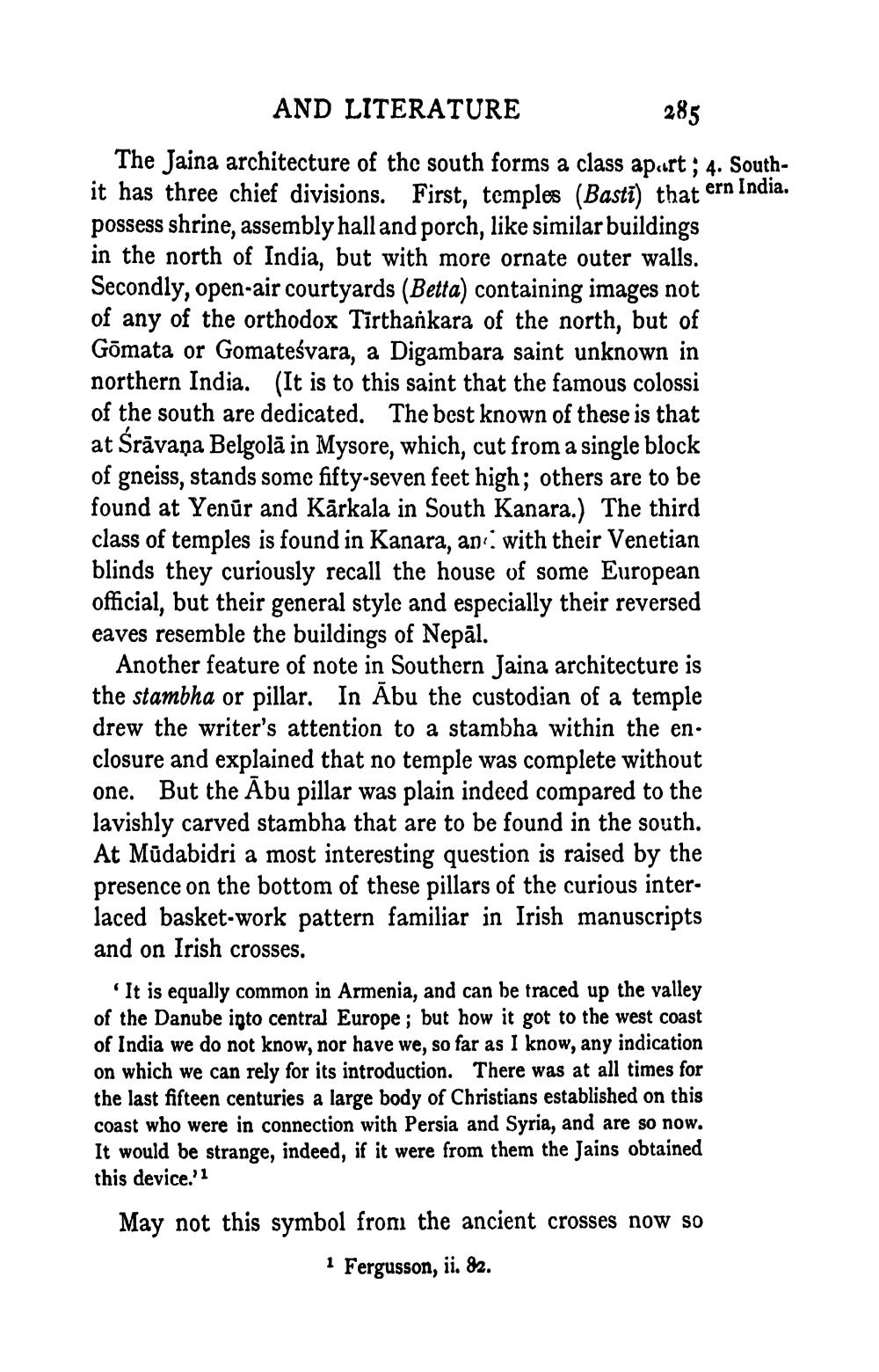________________
AND LITERATURE
285
The Jaina architecture of the south forms a class apart; 4. Southit has three chief divisions. First, temples (Basti) that ern India. possess shrine, assembly hall and porch, like similar buildings in the north of India, but with more ornate outer walls. Secondly, open-air courtyards (Betta) containing images not of any of the orthodox Tirthankara of the north, but of Gōmata or Gomateśvara, a Digambara saint unknown in northern India. (It is to this saint that the famous colossi of the south are dedicated. The best known of these is that
at Śrāvana Belgola in Mysore, which, cut from a single block of gneiss, stands some fifty-seven feet high; others are to be found at Yenur and Karkala in South Kanara.) The third class of temples is found in Kanara, and with their Venetian blinds they curiously recall the house of some European official, but their general style and especially their reversed eaves resemble the buildings of Nepāl.
Another feature of note in Southern Jaina architecture is the stambha or pillar. In Abu the custodian of a temple drew the writer's attention to a stambha within the enclosure and explained that no temple was complete without one. But the Abu pillar was plain indeed compared to the lavishly carved stambha that are to be found in the south. At Mūdabidri a most interesting question is raised by the presence on the bottom of these pillars of the curious interlaced basket-work pattern familiar in Irish manuscripts and on Irish crosses.
'It is equally common in Armenia, and can be traced up the valley of the Danube into central Europe; but how it got to the west coast of India we do not know, nor have we, so far as I know, any indication on which we can rely for its introduction. There was at all times for the last fifteen centuries a large body of Christians established on this coast who were in connection with Persia and Syria, and are so now. It would be strange, indeed, if it were from them the Jains obtained this device.'1
May not this symbol from the ancient crosses now so 1 Fergusson, ii. 82.




